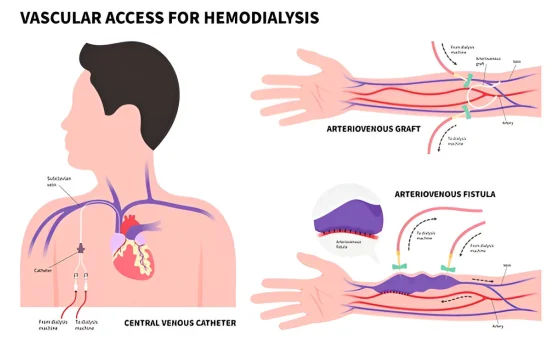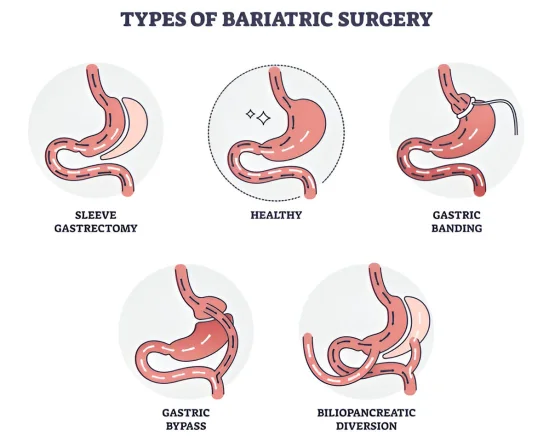Arteriovenous malformation (AVM) is an uncommon but serious disorder that causes unnatural tangled blood vessels, arteries and veins, which bypass regular capillary systems. The disruption to blood flow may affect different areas of the body, however, it is usually seen in the brain and the spinal cord. Although AVMs may not be symptomatic for many years, once symptoms begin to manifest, they could result in life-threatening complications which can require surgery.
What Causes for Arteriovenous Malformation Surgery?
The exact causes for arteriovenous malformation surgery is not yet entirely identified. But, a number of causes are speculated to be involved:
The causes for arteriovenous malformation surgery can vary, and identifying them early on can lead to better outcomes. Patients should be aware of these causes for arteriovenous malformation surgery to seek appropriate medical advice.
- Congenital FactorsAVMs are usually congenital, which means they occur when a baby is born. These anomalies develop as a result of fetal growth, as blood vessels develop in an incorrect way. They’re generally not genetically inherited and are often seen occasionally.
- Genetic ConditionsAlthough uncommon, AVMs can be linked to genetic disorders like Hereditary hemorrhagic Telangiectasia (HHT). People affected by this disorder are more susceptible to developing numerous AVMs across the entire body.
- Trauma or Head InjuryCertain experts believe that head trauma or a significant injuries could contribute to the development or strengthening of AVMs However, this connection is still being investigated.
- Hormonal ChangesThere is evidence emerging that suggests hormonal changes, specifically during pregnancy or puberty, could increase the growth or rupture risk of AVMs that are already present.
- High Blood Pressure (Hypertension)
High blood pressure that isn’t controlled doesn’t directly cause AVMs but it could increase the risk of rupture which could lead to the need for an emergency surgical intervention.
Why is Arteriovenous Malformation Surgery Needed?
Surgery is usually recommended depending on the size, location and signs that are associated with the AVM. Here are the most common reasons or triggers that call for AVM surgery:
- Risk of Hemorrhage (Bleeding) :- The primary reason for AVM operation is due to the chance of bleeding. If the AVM is ruptured, it may result in intracranial hemorrhage that can lead to stroke as well as brain damage, and even death. Surgery can be a preemptive or an emergency treatment in these situations.
- Seizures and Neurological Symptoms :- AVMs can cause seizures, muscle weakness, numbness, vision problems, or speech difficulties. If symptoms are persistent or worsen, surgery is usually the best choice to avoid further damage.
- AVM Growth or Structural Changes :- Certain AVMs are able to change their shape or size with time and can increase the risk of rupture or exerting pressure on the surrounding tissue of the brain. Studies of imaging (like MRI or CT scans) will be able to identify the changes and, if an AVM gets unstable, surgery could be suggested.
- Ineffectiveness of Non-Surgical Treatments :- In many instances conventional treatments such as medications as well as radiotherapy (such in stereotactic radiation surgery) are the first choice. However, if these treatments don’t work or the AVM does not shrink surgical resection may be the next option.
- Patient Age and Overall Health :- Patients who are younger are usually more suitable for surgery because they are at a greater risk of enduring the possibility from AVM rupture. In such instances, doctors may decide to have surgery to prevent long-term risks particularly when the AVM is located in an surgically accessible location.
Types of AVM Surgery
Based on the dimensions, location and the risk elements of the AVM doctors can select from a variety of surgical options:
- Microsurgical Resection :- This is the most commonly used and most effective method for AVM surgery. Neurosurgeons eliminate the AVM by a craniotomy employing a powerful microscope. This technique is most suitable for small or superficial AVMs.
- Endovascular Embolization :- A minimally invasive procedure where catheters are introduced into blood vessels and a specific glue or coil is utilized to stop the AVM. It is a possibility to use it as a stand-alone procedure or as a preparation for microsurgery.
- Stereotactic Radiosurgery :- This non-invasive method targets the AVM using targeted radiation to reduce or enlarge it over time. Although it’s not considered surgery, it’s frequently used in conjunction with or as a substitute for traditional procedures when surgery presents the risk of being too dangerous.
Benefits of Timely AVM Surgery
- Reduces the risk of Stroke and Hemorrhage The biggest benefit is that it reduces the chance of strokes or bleeding that occur suddenly.
- Reduces Symptoms: Surgery may alleviate or greatly reduce symptoms such as seizures, headaches and neurological impairments.
- Enhances the Quality of Life Particularly for younger patients Early intervention could mean the possibility of a normal lifespan and complete neurological recovery.
Risks and Considerations
Awareness of the causes for arteriovenous malformation surgery is essential for both patients and healthcare professionals to facilitate informed decision-making regarding surgical options.
As with any surgical procedure, AVM surgery comes with the potential for risk, which includes:
- Infections or bleeding
- Damage to the brain tissue surrounding it
- Acute or post-operative stroke
- Physical or cognitive limitations (depending on AVM place)
It’s important to partner with a skilled neurosurgical team, and undergo thorough scans and tests prior to surgery.
Conclusion
Understanding the reasons behind the necessity for surgery to correct arteriovenous malformations is crucial for both patients as well as medical professionals. While causes for arteriovenous malformation surgery are rare, they carry significant risks if left untreated–especially when symptoms begin to show or rupture occurs. Surgery is a potentially lifesaving solution, especially if the AVM is inaccessible and is symptomatic. Being informed about the causes for arteriovenous malformation surgery can empower patients to make better health decisions.
If you or someone close to you has been diagnosed with an AVM seek out a specialist neurosurgeon or neurologist to evaluate the risk factors and consider options for surgery. Modern advancements in imaging and microsurgical techniques results of AVM procedures have become more safe and efficient.























